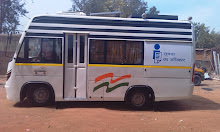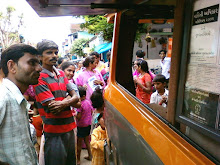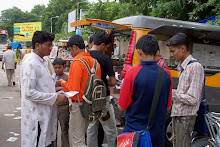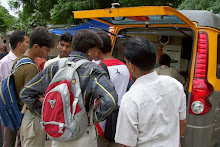Moneylife:
Pune: Wednesday, October 31, 2012.
While the
EPFO’s interaction with subscribers has improved, much remains to be done with
what is essentially supposed to function like a bank but ends up like a tax
authority. This is a guide to an essentially hassle-free experience to obtain
details of EPFO
One of the
biggest issues I faced with employees, as the head of a small software company,
was the reality of deductions for the Employees’ Provident Fund Organisation
(EPFO). Many youngsters working in my company, benchmarking their “take-home”
with their counterparts elsewhere, that employers often paid lump sum amounts
to ‘consultants’. The EPFO viewed this component as a “tax deduction”.
Considering the way the EPFO used to function, and often still does, making
genuine withdrawals a kafkaesque procedure, in which people had to literally
beg for their own money.
That aspect
of the perceptions—that the EPFO will make it extremely difficult for you to
get your own money back—as well as the realities of life, still persist. The
forms required to be filled in for withdrawal, for example, are ancient,
difficult to understand and mired in red-tape. An “advance receipt” filled in
with the columns for amounts kept blank and requires the subscriber to accept
whatever will be paid without demur. The methods used to calculate interest
earned are also kept deliberately shielded. These are certainly not
subscriber-friendly. Of course, personal interaction is still a mess. The
“Public Relations Officer” behaves more like somebody running an inquisition,
with touts all over the place.
However, to
give one of the most moribund and closed organisations due credit, one must say
“thank you” to the people on top for having literally forced their way to
induce some improvements. For example, getting to know the balance in your
account is now as simple as going through a one-step procedure online
(http://www.epfindia.com/membbal.html), where all that is required is your
subscriber/member account number, name as spelt and a mobile number. Within a
few minutes your balance will be displayed to you on your mobile phone by SMS.
The downside is that the balance is updated only until 31 March of the most
recent financial year, so you really do not know how to keep track of exact
balance as well as rate of interest applied, and a host of other details.
Your EPFO
savings could be at risk, unless you secure some important aspects yourself. To
read what these are, click here.
If you want a
detailed year-by-year statement, like a bank passbook, which is what it should
be like ideally, then you will still need to file a Right to Information (RTI)
application (http://www.epfindia.com/sites/pdf/RTI_1.pdf). This is also not
very difficult—you can do so by post or going to the nearest EPFO office
(http://www.epfindia.com/rti_officers.html). It is good to do so as it keeps
them as well as your employers on their toes that as though somebody is keeping
a watch on them.
Likewise,
filing a claim for repayment has always been a tough job, and even now you
don’t really get a numbered receipt. All you get is a rubber-stamp on what
looks like a registered acknowledgement due card, and given to you by hand.
This is pretty much worthless and, in the past, you could go round and round to
find out where your claim form had gone. Now, once again, all you need to do is
to go online, fill in the bare details, and you get not just your claim
reference number, but also the position on where the claim has reached
(http://www.epfindia.com/claimstatus_new.html). Here again, if you find that
your claim is not moving, then a simple RTI application with the claim
reference number, asking for the status of the claim, is enough to motivate the
mandarins at your EPFO office. This works very well, and I can attest to it,
having guided a number of people along this route.
Another
important matter to keep track of is to ensure that the amount deducted from
your salary is being remitted by your employers into the EPFO account. To do
this, you will need to match your deductions with your balances and, if in
doubt, ask the EPFO office. This, again, is best done through the RTI route.
Agreed, much
of the information provided is not up-to-date, very often the claim status will
just state “in process”. But at least you have some quantitative information to
start with.
And as with
all dealings with the government involving money, you can always seek
post-facto clarifications and explanations. Things are under control so as long
as people at the EPFO handling your case know that you are aware.
Good luck.
And remember, your money in the EPFO is amongst the best investments out there.
Just take time out to follow the simple steps outlined above.































